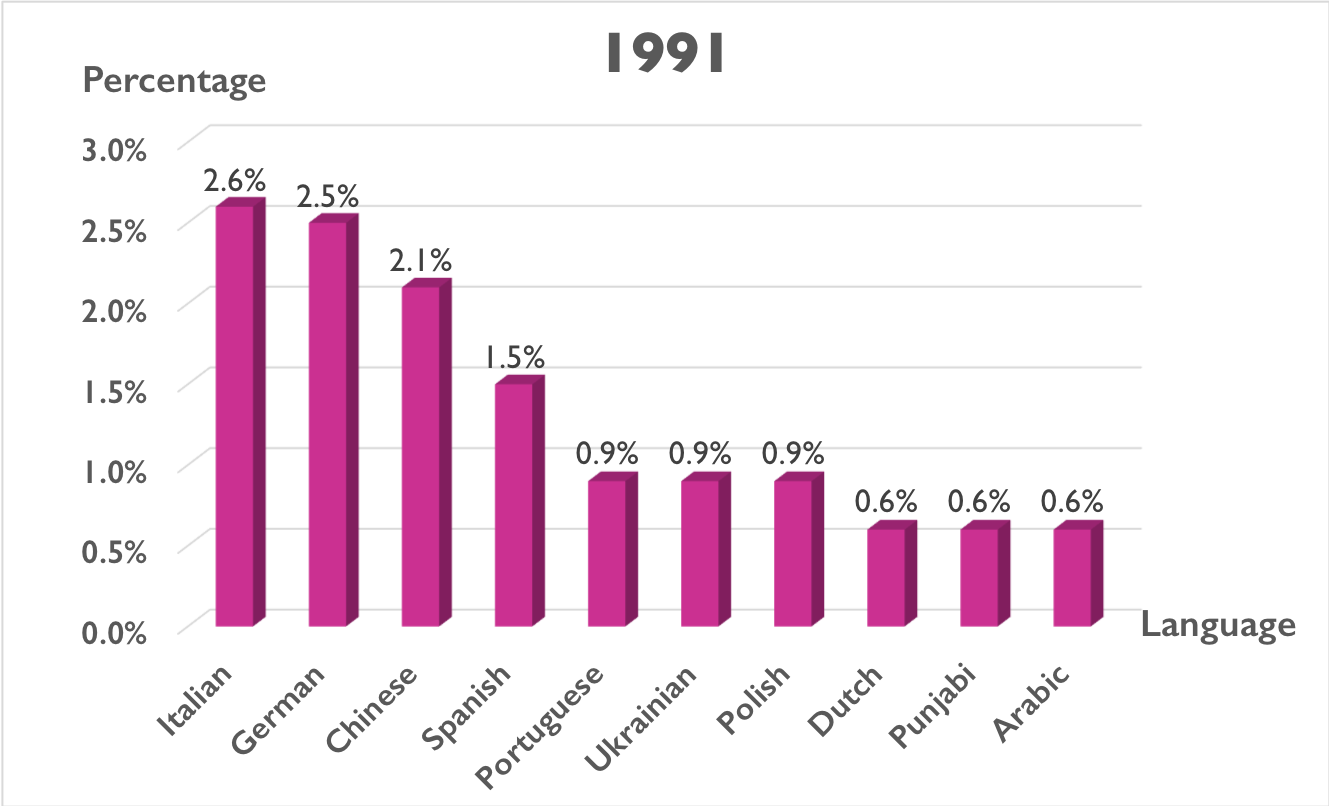THE SHIFTING MOSAIC
Language in Canada has always been in flux. Today, Canadian languages continue the trend of transformation.
Individual languages often encounter change. In Canada, loanwords
 loanword
loanword
a word adopted from another language
are common. For example, in Canadian English, the word dépanneur
 dépanneur
dépanneur
a convenience store
is a loanword borrowed from Canadian French. There are also “Canadian-isms”, like the Canadian English term keener
 keener
keener
a person who is overly enthusiastic about something
.
The way Canadians speak to each other is also changing. Almost 20% of Canadians speak more than one language at home. In fact, Canadians increasingly report having more than one mother tongue that is not English or French.
Many of these languages are heritage languages. A heritage or immigrant language is a non-official language brought to Canada after English and French colonization.
Compare: Growth of Heritage Languages Over Last 25 Years, 1991 to 2016
Heritage languages are on the rise in Canada. In the last five years, the number of Canadians who report a heritage language as a mother tongue has risen by almost a million.
Growth Of Heritage Languages Over Last 5 Years, 2016
In Canada, heritage languages are often spoken alongside other languages. More than a third of Canadians regularly speak a language other than their mother tongue. Being able to speak more than one language is known as bilingualism or multilingualism.
Canadians with a non-official language as their mother tongue are much more likely to be bilingual or multilingual. Bilingual and multilingual Canadians usually speak English or French in combination with their mother tongue.
Bilingual and multilingual Canadians might speak a few different languages over the course of one day because a certain language may feel more appropriate or comfortable in one situation than another. For example, someone might choose to speak Arabic when they’re at home but speak French with their friends at school. Bilingual and multilingual Canadians might even switch languages over the course of a single conversation. This is called code-switching.
In Canada, bilingual and multilingual workplaces are becoming more common.
Languages at home, 2016
Languages at work, 2016
Bilingual and multilingual Canadians can face language retention challenges. The term “retention” describes how much a person continues speaking their mother tongue. Full retention means that the mother language is the language most spoken at home, whereas partial retention means that the mother language is spoken regularly, but not the most often. Different languages have different retention rates.
Languages With Total Retention Rates Over 90%
Languages sometimes experience low retention rates because of language loss. In Part 4, you can learn more about language loss in Canada and its effects.







